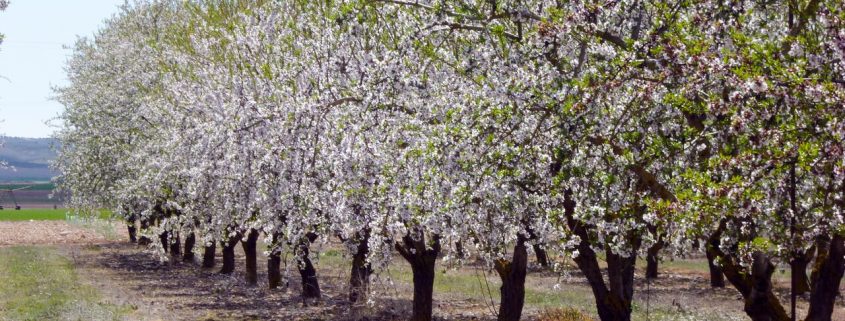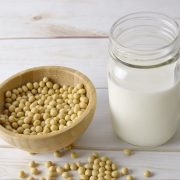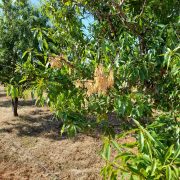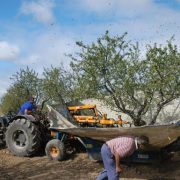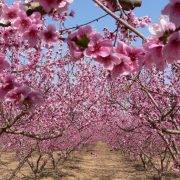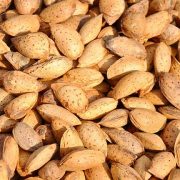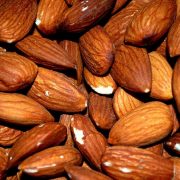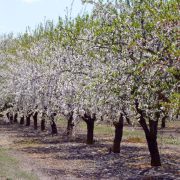The genetic improvement of the almond tree in IRTA
From producing 25% of the world almond to 4% today In the 1970s, Spain produced around 25% of the world total of almonds, currently only 4%, being the third producer country. With 80%, the US dominates world production followed by Australia (7%). Both countries base their production on varieties of soft shell and is stabilized. In our country the main varieties cultivated so far have been traditional varieties of hard shell such as ‘Desmayo Largueta’, ‘Marcona’ and various localities, with early flowering season, very exposed to late frosts and the consequent crop losses. Due to the randomness of the productions, the almond tree was considered as a complementary crop, located in marginal conditions, in poor soils, not suitable for other species and basically in dry land with little cultural care. Currently, Spain is the country with the largest area with 661,000 ha, followed by the US with 405,000 ha, while Australia only has 39,662 ha. With these data, it is clear that the production is not directly related to the surface, but to the productive efficiency in each country. Today 86% of the Spanish surface of almond tree is still cultivated in dry land and, in many cases in hard dry lands of less than 300 mm of annual rainfall (areas of Castilla-La Mancha, Murcia and Andalusia). This leads to very low productivities that in many cases do not exceed 100 kg of grain / ha.
In the last 5 years, the irrigated almond tree has doubled the hectares (from 5 to 14% of the total area of the almond tree). It is still early to see a productive increase, since most of the plantations are still young (Figure 1) and in some cases have low irrigation endowments, but in the next few years if a highly significant increase in national production can be observed . The estimates that have been made on the growth of the crop, consider that in 2025 the new planted area (both rainfed and irrigated) can exceed 150,000 ha, to which we must add the current ones and that may involve a production of more than 150,000 t.
The future must be based on varietal improvement, new production models under irrigation and agronomic management
When the almond tree is handled in a similar way to any other fruit tree, the average yields that can be obtained exceed 2,000 kg of grain / ha. The new varieties and the new production models can help to improve the productive potential, but it is still unknown to what extent. The new intensive and super-intensive plantations provide precocity, total mechanization, continuous harvesting and high yields. But, in addition, there is room for improvement in the advance of the agronomic management of the current plantations.
The contribution of IRTA to the varietal improvement of the almond tree
The Spanish genetic improvement programs of the almond tree have been and are the most active, obtaining a series of new varieties with a great productive impact both in Spain and in other Mediterranean countries. The IRTA program for obtaining almond varieties by controlled crosses started in 1975. IRTA has 7 almond varieties. Already in 1992 three varieties were registered, ‘Masbovera’, ‘Glorieta’ and ‘Francolí’, which reached a wide diffusion. In 2011, IRTA obtained the Plant Production Certificate for four new varieties, ‘Vairo’, ‘Constantí’, ‘Marinada’ and ‘Tarraco’. The first three, especially ‘Vairo’ (Figure 2 and 3), have had an excellent reception in the sector and have spread very quickly (declared sales far exceed the six million trees). ‘Tarraco’ has been very sensitive to monilia and ocher stain and, therefore, it is not advisable to use it in areas where these diseases are a problem. ‘Vairo’, ‘Constantí’, ‘Masbovera’, ‘Glorieta’ and ‘Francolí’ are late flowering; ‘Marinada’ and ‘Tarraco’ very late. ‘Vairo’, ‘Constantí,’ Marinada ‘and’ Francolí ‘are self-fertile, with a high level of autogamy; ‘Tarraco’, ‘Masbovera’ and ‘Glorieta’ need cross-pollination.
All the varieties have shown a high productive capacity and are easy to form and prune. Several of them have a remarkable level of tolerance to two important diseases: fusicoccum (Diaporthe amygdali) and ocher spot (Polystigma amygdalinum).
All the varieties have shown a high productive capacity and are easy to form and prune. Several of them have a remarkable level of tolerance to two important diseases: fusicoccum (Diaporthe amygdali) and ocher spot (Polystigma amygdalinum).
IRTA varieties have good fruit characteristics. They are hard shell, good grain appearance and no double almonds. It is noteworthy the high size of the grain of the variety ‘Tarraco’ and the oil content of several of them. All of them show good aptitude for different industrial uses.
The almond tree still has many possibilities for improvement. The objectives of the crosses should be basically the same, since a good variety should gather a set of outstanding characters, with a special emphasis on: quality, tolerance to diseases and very late flowering. In these three objectives, with the genetic resources currently available, it is foreseeable to achieve important advances.
The new productive models in irrigation
Currently, irrigated with the available plant material and harvesting machinery, it is possible to plan new, more intensive production models.
The new production models include the use of different training systems (glass, shaft, fruit wall, etc.) and the use of graft carriers of moderate or reduced vigor, which combined with the new varieties can achieve high production and early.
The new intensive production models aim to increase the precocity of the entry into production of the plantation, reduce management costs (pruning), mechanizing as much as possible all operations, increase the productive potential of new plantations and improve the management of collection of the almond, using continuous harvesting systems.
At a global level of the crop, it is intended to improve the profitability of the plantation, reducing the management costs (generated mainly by labor) and increase revenues by reducing the unproductive period to reach full production of the plantation as soon as possible. These two new productive models present both positive aspects (increase in the production of the plantations in the first years and continuous mechanical harvesting), and negative ones (high cost of planting, difficulty in handling, etc.), but it will undoubtedly be in the next years when you can assess their interest regarding their agronomic, economic and environmental sustainability.
Intensive model
Based on the traditional model, formed in a glass, with much narrower planting frames: 6 x 4 m, 5 x 5 m, 5 x 4 m and 5 x 3 m (400-666 trees / ha), try to reduce the unproductive period of the plantation, increasing precocity by increasing the number of trees in the plot. The formation and the management of the trees in this type of plantations are similar to the traditional model in classic glass, but with a less severe or minimal pruning.
The collection with vibrator with inverted front or rear attack umbrella is no longer useful because the streets are too narrow (except for some new side umbrellas that could work in these narrower frames). Self-propelled vibrating machines and tarpaulins or bales (similar to the olive method) or riding machines can be used.
Regarding the productivity of the intensive system, although data are still lacking, productions superior to the traditional model have been obtained, surpassing 3,000 kg of grain / ha, and in some model 4,000 kg of grain / ha are obtained.
Super-intensive model
Based on further narrowing the plantation frames and changing the system of tree formation from a classic glass to an axis or a fruit wall (Figure 4 and 5), similar to that used in olive trees, with collection by riding machines . The frames most used in this model are between rows 3-3.5 m and between trees: 1-1.5 m (2,500-2,800 trees / ha), with holder-grafts of moderate to weak vigor, since it is necessary that the tree has small dimensions (Figure 6), using varieties with high branching and with fruiting habits mainly in May bouquets and brindillas.
Formation in fruit axis or wall, managed by mechanical pruning, with some manual intervention and harvesting with riding machines used in high density but modified olive plantations.
Agronomic management of the crop
The agronomic management of the crop, formation and pruning, irrigation, fertilization and phytosanitary practices will mark the success or failure of the plantation.
Source: IRTA




